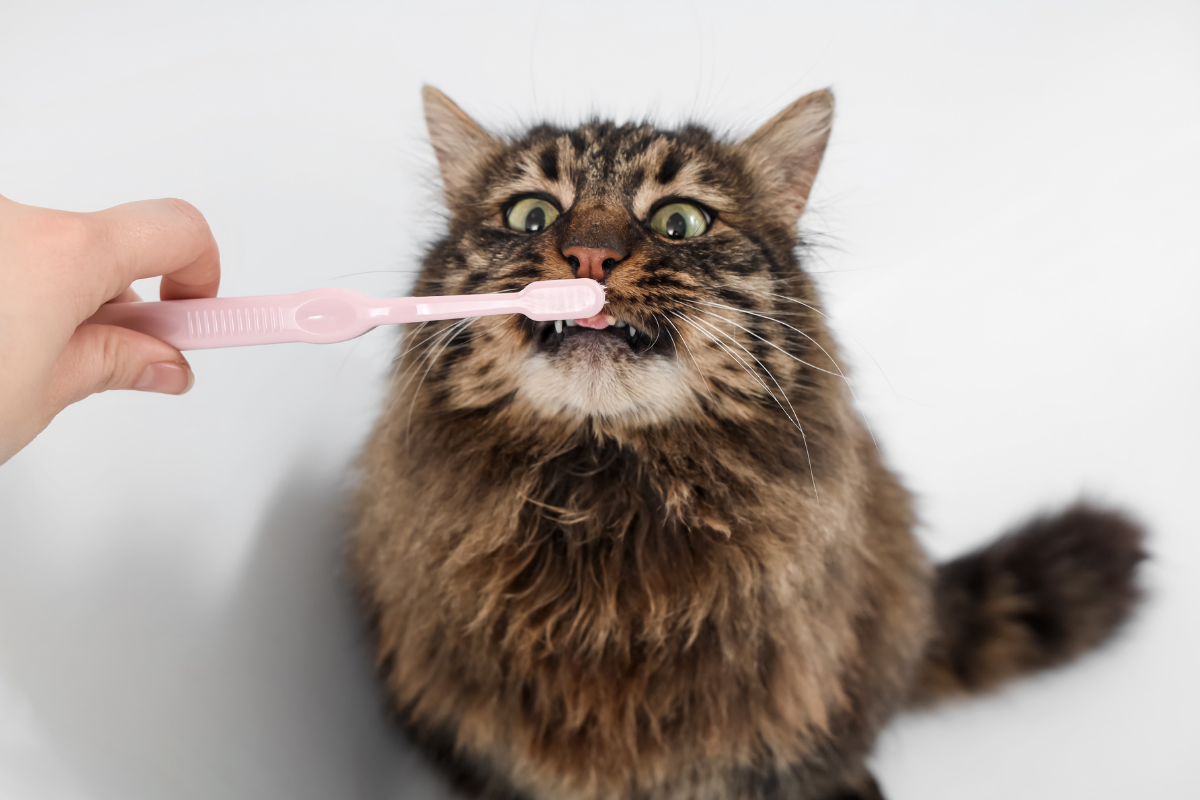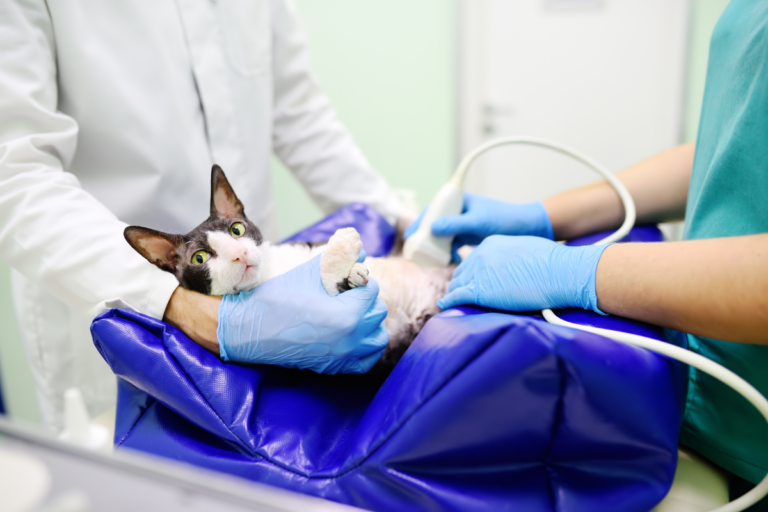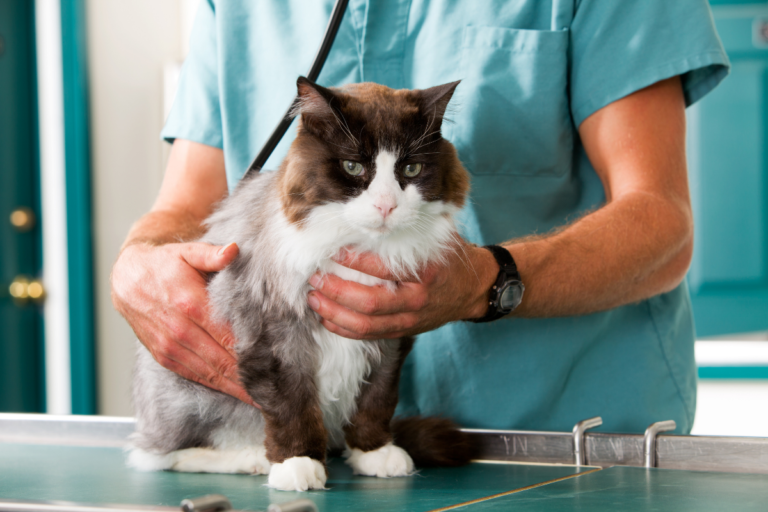Fangs of Fortune: Understanding the Significance of Cat Teeth
Understanding Cat Teeth
Let’s sink our teeth into the topic of cat chompers and just why they’re so darn important. Before we dig in deeper, we gotta get the lowdown on what makes those fangs so special, right? Cats aren’t just about the fluff — their teeth play a pretty central role in their lives.
Dental Anatomy of Cats
Inside that cute kitty mouth lies a setup perfect for their meat-loving nature. They’ve got a fancy dental design where every tooth basically has its job. Here’s the scoop on their teeth situation:
- Brachyodont teeth: Cats’ teeth come with a deadline, growing only so much before calling it quits, with the root showing more dedication than the part you chew with.
- Diphyodont dentition: Simply put, our feline friends go from baby teeth to big-kid teeth, just like us. This double act keeps them munching through life (dvm360).
Once they’re wearing their adult pants (or fur), cats sport a respectable 30 teeth, all mapped out like a dental treasure map.
| Cat Dental Formula | Number of Teeth |
|---|---|
| Upper Jaw (3/3 I, 1/1 C, 3/2 P, 1/1 M) | 16 |
| Lower Jaw (3/3 I, 1/1 C, 3/2 P, 1/1 M) | 14 |
| Total Teeth | 30 |
Function of Different Teeth
Each tooth in a cat’s mouth has its own gig, perfectly set for their diet and shenanigans:
- Incisors: With 12 tiny soldiers (six uppers and six lowers), these guys are on duty for the cat’s version of hairdressing and grabbing a bite to eat (dvm360).
- Canines: Four impressive daggers, one per corner of their mouth, are all about the pierce-and-snap action when a real-life mouse hunt is underway.
- Premolars and Molars: Cats have a mini cutlery set in their mouths with 10 premolars and 4 molars. Unlike human teeth, they’ve got what they call “carnassial teeth,” ready to cleave through a chunk of meat like a hot knife through butter (dvm360).
| Tooth Type | Function | Number of Teeth |
|---|---|---|
| Incisors | Grooming, grasping | 12 |
| Canines | Puncturing, holding prey | 4 |
| Premolars | Shearing food | 10 |
| Molars | Cutting food | 4 |
Getting a grip on how those cat teeth work makes us better at taking care of our furry pals and their chompers. Need tips on keeping your cat’s smile fresh and fabulous? Check out our guides on cat gum disease and cats dental disease.
Common Dental Issues in Cats
Cats, just like us, can run into some tooth troubles throughout their lives. Knowing what’s what when it comes to dental drama is crucial for keeping our furry pals in tip-top shape. Let’s chew over some typical cat dental issues: sore gums, tooth breakdown, and ouchy mouth.
Periodontal Disease
Gum disease, the bane of many whiskered mouths, is a biggie in the feline world. Can you believe about 7 out of 10 cats will contend with this nuisance by age 3? (PetVax Animal Hospital).
This party pooper happens when gunk (a.k.a. plaque) and crusty stuff (tartar) take up residence along the gums. And since cats aren’t exactly flossing twice a day, those bacteria party hard, possibly causing nasty infections and losing teeth if you don’t jump in (Pet Place).
| Cat’s Age | Likelihood of Getting Gum Disease |
|---|---|
| Up to 1 year | 20% |
| 1-3 years | 50% |
| 3+ years | 70% |
Learn more about keeping kitty’s chompers pain-free in our cat gum disease article.
Tooth Resorption
Tooth breakdown is a sneaky one – it’s where the teeth slowly crumble away. This nasty critter can bug about three in four older cats (PetVax Animal Hospital). Those little nasty spots, or holes in tooth crowns, like to show up more often in middle-aged to senior kitties, sometimes hitting the nerve and causing major ouchies (Pet Place).
The usual fix? Yanking out the bad teeth to ease the ache and avoid more mishaps.
Stomatitis in Cats
Ever seen a cat flinch away from food? It might be grappling with stomatitis – an incredibly painful swelling of the mouth’s soft bits. Cats with this condition may skip their meals because it hurts too much to chow down, which can lead to shedding those pounds and feeling lousy overall.
Sometimes it’s so bad, a vet might need to step in and clear out the worst parts of the gums so they can scarf their kibble pain-free again (PetVax Animal Hospital). Catching it early is a game changer.
For more on knowing and caring for oral health in cats, drop by our page on cats dental disease.
Staying clued into these common dental baddies means we can help our cats strut their stuff with healthier smiles. Making dental TLC part of the routine and keeping up with vet visits goes a long way in managing and warding off oral problems. For more insights and advice on keeping your whiskered companion healthy, check out our pages like healthy cat weight, cat liver problems, and heart issues in cats.
Importance of Feline Dental Health
Impact on Overall Wellness
Keeping our kitty’s chompers in check is super important for their overall groove. Bad dental vibes can lead to infections, lost teeth, and could even mess with their insides — yep, those tiny fangs might be more powerful than we think. If we let those pearly whites decline into gum issues, we might be cutting their years short by about four to six (yikes!) (DailyPaws).
Watch out for these telltale signs of kitty dental drama:
- Gums look like they’re blushing — red and angry!
- Brown stuff lining the teeth — hello, tartar!
- Missing teeth or ones looking like they might jump out
- Less excitement at mealtime — not a good sign
Regular vet hangouts and top-notch tooth care are our allies here. Catching dental boo-boos early makes things way easier.
Preventative Measures
Let’s talk prevention, folks — no kitty left behind! Here’s how we can keep those feline fangs sassy and shiny:
-
Professional Teeth Cleanings: Get the pros to do their magic once a year. Vets can scrub off the gunk that DIY efforts can’t quite tackle.
-
Routine Veterinary Check-ups: At least once a year, let’s get those furry mouths looked at (Cupola Animal Hospitals). Check for any hidden troubles like cats dental disease and cat gum disease.
-
Daily Brushing: Brushing daily is like sweet music to kitty teeth! Just grab a special kitty toothbrush and toothpaste — they’ll love you for it.
-
Dental Hygiene Products: Try the whole shebang — chews, water treatments, and gels. They add a little extra sparkle to that daily routine.
-
Monitoring for Symptoms: Keep your detective hats on for signs like red gums, tartar, or an appetite on a diet strike. Spotting these early means skipping more daunting health woes.
| Preventative Measure | How Often? |
|---|---|
| Professional Teeth Cleanings | Once a year |
| Veterinary Check-ups | Once a year |
| Brushing | Daily dose |
| Use of Dental Hygiene Products | As Needed |
| Check for symptoms | Keep an eye out |
For happier, healthy whiskers and wagging tails, let’s be proactive paw-rents about their dental care! And hey, don’t forget those signs of dental issues lurking. Want more? We’ve got a bunch of goodies on how to keep your feline friend in tip-top shape!
Dental Care for Cats
Taking care of our cats’ chompers is super important for keeping them happy and healthy. Nobody wants a kitty with tooth trouble!
Professional Dental Cleanings
Getting the pros involved is key. When vets clean teeth, they can take care of that pesky tartar lurking where a toothbrush won’t reach. Our pals over at PetVax Animal Hospital say keeping cat teeth in check can stave off nasty stuff like gum disease or losing those pearly whites.
Yearly check-ups are a must ’cause cats are sneaky and might not show they’re hurting, even when they are. Cupola Animal Hospitals suggest a vet visit every year to nip dental probs in the bud.
Home Dental Care Practices
We can also play dentist at home! Here’s some easy stuff we’ve heard can make a big difference:
-
Tooth Brushing: Get a tiny toothbrush and some cat-friendly paste. Regular scrubbing helps prevent periodontal disease. Check out our step-by-step on giving your kitty’s gums a good rub down here.
-
Dental Treats: They’re no substitute for brushing, but they can help fight plaque and keep breath fresh as daisies.
-
Water Additives: Splash a bit of this in their water bowl. It doesn’t replace brushing, but it’s a handy sidekick in keeping mouths clean.
By making these simple things a habit, our cats are less likely to run into dental troubles. DailyPaws even backs us up on this.
Signs of Dental Issues
Catching dental issues early makes it easier for everyone. Here’s what to keep an eye out for:
- Bad Breath: A stinky breath could mean tooth trouble.
- Red or Bleeding Gums: These could be waving a gingivitis or infection flag.
- Difficulty Eating: Eating less or favoring one side might hint at pain.
- Drooling: More drool than usual? It’s worth checking out.
- Visible Tartar or Missing Teeth: If you see this, it’s time to call the vet.
Spot any of these signs? Better hustle to the vet! We’ve got more tips on dealing with these on our cat dental disease article.
For those who like things organized, how about a handy table?
| Sign of Dental Issue | Description |
|---|---|
| Bad Breath | Persistent stinky smell |
| Red/Bleeding Gums | Possible inflammation or infection |
| Difficulty Eating | Shying away from food; chewing funny |
| Drooling | Too much slobbering |
| Tartar/Missing Teeth | Clear signs of trouble |
Together, regular vet visits and a bit of a home cleanup can keep our cats grinning. Let’s keep those kitty smiles bright and our feline friends living life to the fullest!
Kittens’ Dental Development
Getting a grip on kittens’ teeth-growing saga is a fantastic way to help them stay healthy and full of life. Just like little humans, kittens also tackle stages as they shift from those small baby teeth to a full-blown adult grin.
Deciduous Teeth
Kittens show up in the world without a toothy grin—thank goodness, or those little faces might look a tad spooky. But around 2 to 3 weeks in, they’ve got some action going on in the mouth. These baby chompers, or milk teeth if you’re feeling nostalgic, make it possible for kittens to munch on real food without the need for mom’s help all the time.
| Teeth Type | Eruption Age (weeks) | Total Number |
|---|---|---|
| Incisors | 2 – 3 | 12 |
| Canines | 3 – 4 | 4 |
| Premolars | 4 – 6 | 10 |
By the time they’re about 6 to 8 weeks old, kittens usually have all 26 of these little pearls. These teeth aren’t just for slicing kibble; they come in handy for play tussles and cleaning their fuzzy coats.
Transition to Adult Teeth
Around 3 to 4 months of age, kittens start swapping out those temporary teeth for the adult version until they’ve got a full mouth of pearly whites at about 6 to 7 months. Adult cats wind up with 30 permanent teeth.
| Teeth Type | Appearance Age (months) | Total Number |
|---|---|---|
| Incisors | 3 – 4 | 12 |
| Canines | 4 – 5 | 4 |
| Premolars | 4 – 6 | 10 |
| Molars | 5 – 7 | 4 |
Now, here’s where things get interesting. It’s not unusual to see baby teeth hanging around when the adult ones make their debut. Yep, like a dental overlap. If a baby tooth wants to stick around longer than it’s welcome, it might need a little help from a vet to prevent any serious tooth trouble.
Teething Symptoms
Teething’s not all sunshine and roses. Kittens might show they’re not having the best of times, with signs like:
- Chewing everything in sight as if it holds the secret to life.
- A bit more drool than usual—think tiny St. Bernard.
- Red looking gums.
- Hesitating to chow down because it hurts to bite.
Keeping an eye on these signs lets you know what’s up in your kitten’s mouth. And hey, don’t hesitate to dig deeper into cats dental disease if you’re curious.
Making sure your kitten’s teeth are in tip-top shape can really give their health a boost. Regular vet visits and some love at home can keep those little mouths smiling bright.
Veterinary Involvement in Dental Health
Step right up, folks! Let’s talk about how having a vet in your kitty’s dental corner makes all the difference. Think about those pearly whites (or not-so-pearly) and how keeping them in shape keeps your furball feeling fantastic.
Routine Dental Check-ups
Annual smile checks aren’t just for humans – they’re a must for your purring pals, too. When those vet folks poke around your cat’s teeth and gums, they’re on the lookout for issues like kitty gingivitis and sneaky tooth resorption. Catching these troublemakers early makes ’em a whole lot easier to tackle—think less kitty drama, more purrs! You can dig deeper into how this magic happens at Cupola Animal Hospitals.
Diagnosis and Treatment
Picture this: your vet’s got their detective cap on, ready to play dental sleuth. Here’s what might go down:
- Snapping X-rays
- Scoping out those pearly whites with an eagle eye
- Giving the mouth a spa day with a good scrape and polish
If things get gnarly, your vet rolls out the red carpet of treatments. Often, a good cleaning or a dab of antibacterial gel does the trick. But for the big league stuff, here’s what’s on the menu:
| Dental Challenge | What Vet Might Do |
|---|---|
| Periodontal Woes | Cleaning, meds, maybe a dental nip-tuck |
| Tooth Resorption | Say goodbye to hurting teeth |
| Stomatitis | Calm them gums with meds or surgery |
Have a chinwag with your vet about any of this stuff and get the scoop on other kitty quirks here.
Cat Tooth Extraction
When dental villains strike, sometimes it’s hasta la vista, troubled tooth! Extractions happen with your kitty snoozing thanks to anesthesia, ensuring it’s all smooth sailing for their comfort. Painless and infection-free are the magic words here.
Got a bunch of questions buzzing in your brain? Ask away before the big day:
- Why’s this extraction on the agenda?
- What’s the healing gig like?
- How can I be a post-extraction hero?
Being in the know is key to being your feline’s best buddy. Catch more wisdom on dental dramas here.
Your vet’s the unsung hero in keeping those whiskers wagging and kitty teeth shipshape. Regular check-ins, spot-on diagnoses, and the right fix can keep your feline friend dancing through life. And if you’re all about feline flair, there’s a wealth of fun stuff to explore, like cat gum gymnastics or feline eye theatrics.






